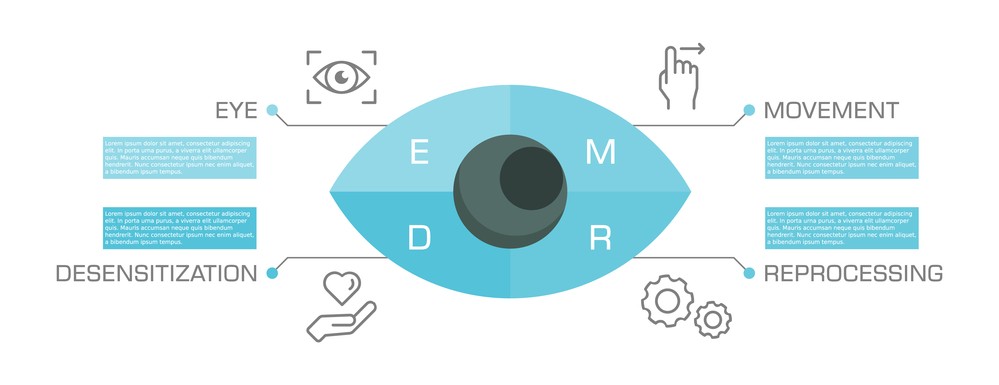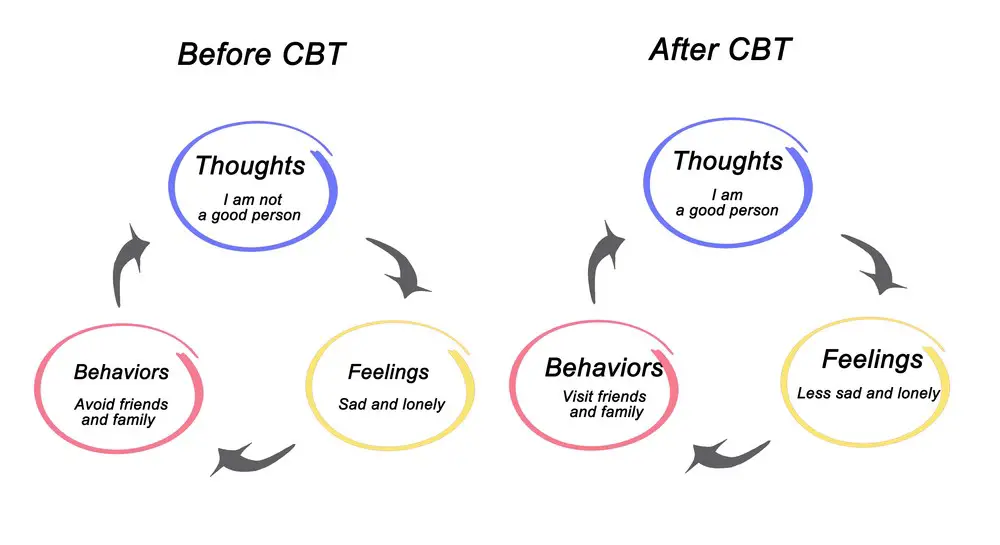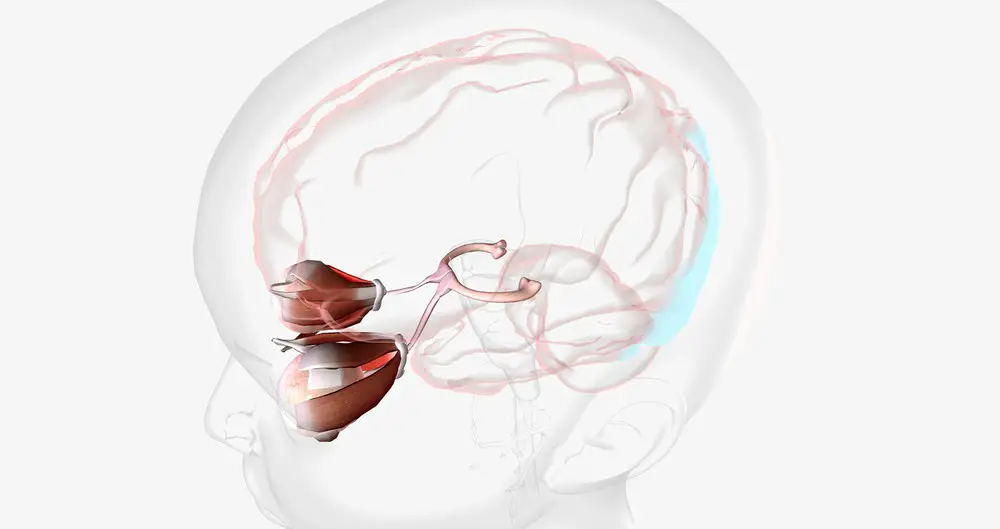As a BetterHelp affiliate, we receive compensation from BetterHelp if you purchase products or services through the links provided
Eye Movement Desensitization and Reprocessing (EMDR) is a well-researched, evidence-based therapy approach for treating various mental health issues, especially post-traumatic stress disorder (PTSD). In recent years, mental health professionals have also started to apply EMDR therapy to address depression, one of the most common and debilitating mental health disorders worldwide.
Initially, EMDR was designed to help individuals process and overcome traumatic memories. However, its application has expanded to cover various psychological conditions, including depression. EMDR focuses on the individual’s brain processing, aiming to facilitate adaptive information processing by desensitizing distressing memories, thus reducing symptoms.
Key Takeaways
- EMDR is an evidence-based therapy primarily used for treating PTSD, but it has demonstrated effectiveness for depression treatment as well
- The therapy focuses on facilitating adaptive information processing to desensitize distressing memories associated with depression.
- EMDR is a unique approach, offering advantages as a depression treatment compared to other therapies.

EMDR Basics
Eye Movement Desensitization and Reprocessing
Eye Movement Desensitization and Reprocessing (EMDR) is a psychotherapy approach Dr. Francine Shapiro developed in the late 1980s. Initially used to treat trauma-related disorders, EMDR has since expanded its applications to other mental health conditions, including depression.
EMDR utilizes a unique technique involving bilateral stimulation, which may come from eye movements, taps, or auditory tones. This stimulation is believed to activate both brain hemispheres, helping individuals process and reorganize maladaptive information contributing to their symptoms.
At the core of EMDR therapy is the Adaptive Information Processing (AIP) model, which posits that psychological distress results from unprocessed memories and associated negative beliefs. EMDR addresses these unprocessed memories, encouraging the brain to integrate and store the experiences properly.
An EMDR session typically involves several phases:
- History Taking and Treatment Planning: The therapist gathers information about the client’s symptoms, identifies target memories, and develops a treatment plan.
- Preparation: The client is taught stress reduction techniques and gains an understanding of the EMDR process.
- Assessment: The client identifies specific aspects of the target memory (e.g., image, associated emotions, negative beliefs, etc.) to focus on during the session.
- Desensitization: Bilateral stimulation is applied while the client focuses on the target memory. The client will periodically provide feedback, and the therapist will adjust the process as needed.
- Installation: Positive beliefs are identified and strengthened to replace the negative ones associated with memory.
- Body Scan: The client is asked to scan their body for any lingering tension or discomfort. If any remains, the therapist will repeat the desensitization and installation steps.
- Closure: The session concludes with grounding techniques to ensure the client feels balanced and secure.
- Reevaluation: Progress is assessed at the beginning of each session to determine if additional work on the target memory is needed or if new memories have emerged.
While individual experiences can vary, many people report significant improvements in their mental health symptoms through EMDR therapy. It is a promising approach backed by solid scientific evidence, showing efficacy in treating depression and other psychological disorders.

EMDR for Depression
Treatment of Depression
Depression is a common mental health disorder that can negatively affect many aspects of a person’s life. Various treatments are available, including medication, therapy, and lifestyle changes. One therapy that has gained attention for its effectiveness in treating depression is Eye Movement Desensitization and Reprocessing (EMDR).
EMDR Therapy
EMDR therapy was initially developed to treat trauma and PTSD. Over time, its applications have expanded to include depression and other mental health disorders. EMDR therapy involves bilateral stimulation, such as eye movements, tapping, or auditory tones, while the client recalls disturbing memories or images. This process is believed to help the brain reprocess these memories, reducing distress and depressive symptoms.
Benefits of EMDR:
- Non-invasive: EMDR therapy does not involve medication or physical interventions.
- Evidence-based: Numerous studies have demonstrated EMDR’s effectiveness in improving mental health outcomes.
During EMDR therapy, the therapist guides the client through several phases, which may include:
- Comprehensive assessment: The therapist gathers information about the client’s history, symptoms, and specific memories causing distress.
- Preparation: The therapist and client establish a safe and trusting therapeutic relationship.
- Memory reprocessing: Bilateral stimulation is used while the client recalls specific memories or images linked to their depression.
- Closure: The client returns to a state of emotional equilibrium at the end of each session.
- Evaluation: The therapist assesses the client’s progress and adjusts treatment as necessary.
EMDR therapy may be used in conjunction with other treatments for depression, such as cognitive-behavioral therapy (CBT) or medication. Treatment choice depends on the individual’s needs and the severity of their depressive symptoms. The duration of treatment may vary, but clients often experience significant improvements in their mental health after several sessions. It is essential to work with a qualified mental health professional when seeking EMDR therapy to ensure appropriate care and support.
Process and Components
Eight Phases
EMDR therapy for depression consists of eight phases the therapist and client work through. The first phase, history taking, involves assessing the client’s life events, unprocessed trauma, and negative beliefs. The therapist identifies specific memories to target during the subsequent phases.
In the second phase, preparation, the client learns various coping mechanisms and relaxation techniques during therapy sessions. Next, in the assessment phase, the therapist and client select a specific memory to work on.
During the desensitization phase, the client focuses on the targeted memory while undergoing bilateral stimulation, which is believed to activate the brain’s adaptive information processing model. This phase aims to reduce the emotional pain associated with the selected memory.
The fifth phase, installation, involves working on replacing the negative beliefs with more positive understanding. In the body scan phase, the client is encouraged to notice any physical sensations related to the new positive beliefs.
In the closure phase, the therapist guides the client to achieve a sense of emotional equilibrium in case any distress arises during the session. The final phase is re-evaluation, where the therapist and client review progress and assess if more sessions are necessary.
Bilateral Stimulation
Bilateral stimulation is a crucial component of EMDR therapy. It involves stimulating the left and right sides of the brain alternately, either through eye movements, tapping, or auditory tones. This alternating stimulation activates the brain’s adaptive information processing model, facilitating the reprocessing of distressing memories.
By combining the targeted processing of traumatic memories with bilateral stimulation, EMDR therapy aims to help individuals suffering from depression achieve a more balanced emotional state and reduce the negative impact of painful memories. The therapy’s confident and knowledgeable approach provides a clear, neutral, and supportive environment for clients to work through their challenges.
Effectiveness of EMDR
Meta-Analysis and Reviews
EMDR (Eye Movement Desensitization and Reprocessing) has been extensively analyzed for its efficacy in treating various mental disorders, including depression. Many meta-analyses and systematic reviews have been conducted to evaluate its effectiveness. These studies typically compare EMDR with other interventions for treating depressive symptoms.
In a meta-analysis by Hofmann et al., EMDR effectively reduced symptoms of post-traumatic stress disorder (PTSD) and depression. The study highlighted the importance of adaptive information processing in treating these disorders. Similarly, a systematic review by Ostacoli et al. examined the efficacy of EMDR in treating depression, revealing promising results for this therapeutic approach.
Clinical Practice
In clinical practice, EMDR has been observed to have positive outcomes in alleviating depressive symptoms. The use of EMDR sessions aims to improve the individual’s mood and overall mental health. The EMDR International Association (EMDRIA) offers guidelines and resources for practitioners to facilitate the implementation of EMDR therapy.
Lehnung et al. conducted a study comparing EMDR to standard care for major depressive disorder, which showed a significant reduction in depressive symptoms for the EMDR group. Furthermore, they reported a lower relapse rate when compared with standard care.
In conclusion, the effectiveness of EMDR in treating depression has been supported by various meta-analyses, systematic reviews, and clinical studies. The therapy has demonstrated efficacy in reducing depressive symptoms and post-traumatic stress, making it a valuable option for mental health professionals to consider in their treatment repertoire.

EMDR Compared to Other Treatments
Cognitive Behavioral Therapy
Eye Movement Desensitization and Reprocessing (EMDR) is often compared to other treatments, such as Cognitive Behavioral Therapy (CBT). Both EMDR and CBT are recommended treatments for PTSD and other trauma-related disorders. While CBT focuses primarily on challenging negative thought patterns and behaviors, EMDR helps clients process traumatic experiences through bilateral stimulation.
The efficacy of EMDR in treating PTSD has been demonstrated in various studies. However, it is important to note that certain factors, such as the severity and type of trauma, might make one treatment option more suitable. Additionally, access to both treatments can vary depending on location and availability of resources.
Medication
When treating depression and PTSD, healthcare professionals often prescribe antidepressant medication, such as selective serotonin reuptake inhibitors (SSRIs) or serotonin-norepinephrine reuptake inhibitors (SNRIs). These medications can relieve symptoms but may also have side effects that some people find difficult to manage.
Like CBT, EMDR can be a helpful alternative to medication for some individuals. It offers a different approach in addressing both depression and PTSD symptoms, allowing patients to process traumatic memories without solely relying on medication. Through EMDR, clients can potentially gain a deeper understanding of their experiences and develop coping mechanisms to manage their symptoms.
It is essential to emphasize that treatment decisions should be made collaboratively with healthcare professionals, who will consider factors such as the specific needs and preferences of the individual patient.
Special Considerations
Adolescent Depression
EMDR (Eye Movement Desensitization and Reprocessing) effectively treat adolescent depression, especially when it is linked to childhood trauma or other stressful life events. Adolescents undergoing significant physical, cognitive, and emotional changes can be more vulnerable to depression. EMDR therapy offers a targeted approach by addressing the traumatic memories and experiences that may contribute to these depression symptoms.
Therapists using EMDR in adolescents should consider the client’s developmental stage and work at an appropriate pace. They should also be vigilant in monitoring potential emotional fluctuations during therapy.
Suicide
Given the increased risk of suicidal thoughts and behaviors in individuals with depression, mental health professionals must assess and monitor clients undergoing EMDR therapy for depression carefully. While EMDR has been shown to reduce depressive symptoms and suicidal ideation in some cases, it is important to approach each case with caution and consider each client’s unique circumstances.
It is advised that mental health professionals maintain open communication with clients about suicidal thoughts and establish safety planning when needed. Close collaborations with other support systems (family, friends, and other professionals) can also help provide comprehensive care to these clients. Lastly, clinicians are encouraged to stay updated with the latest research findings on EMDR and suicide risk to make informed decisions about the most appropriate course of treatment.
The EMDR Therapist
Training and Certification
An EMDR therapist undergoes extensive training to become proficient in this specific therapy modality. They must complete an EMDR International Association (EMDRIA)-an approved program involving theoretical knowledge, practical skills, and supervised practice. The therapists learn how to develop an effective treatment plan that focuses on helping patients process traumatic events and enhance their coping methods.
To maintain their certification, EMDR therapists must engage in ongoing Continuing Education (CE) courses and adhere to the high professional standards established by EMDRIA. They are skilled in managing patients’ feelings and promoting a nonjudgmental and supportive therapeutic atmosphere.
Finding a Therapist
When seeking an EMDR therapist, it is essential to verify their training and certification status via professional directories such as the EMDRIA website or reputable therapist databases. Finding a therapist with the right skill set ensures appropriate guidance through eye movements and other techniques involved in the treatment.
Patients can discuss their concerns during initial consultations and determine if the therapist’s approach aligns with their needs. An experienced EMDR therapist can modify the treatment based on the patient’s unique history and adapt their tone and style accordingly.
Throughout the therapy process, the role of the EMDR therapist is to facilitate healing by directing the patient’s attention to various stimuli while simultaneously processing negative emotions and memories tied to traumatic events. Their expertise ensures an efficient flow of energy and fosters the development of healthier coping strategies.
EMDR in Practice
Treatment Protocol
Eye Movement Desensitization and Reprocessing (EMDR) is a promising treatment approach for unipolar depression. Its application in clinical practice often follows a standardized treatment protocol, such as the DEPREND (Depression-focused EMDR) protocol. The DEPREND protocol targets depressive symptoms through cognitive, emotional, and sensory techniques. Therapists often implement it in 12 sessions, following a structured format.
Feasibility studies have shown that EMDR can effectively treat severe depression. One commonly used measure to evaluate depression severity is the Hamilton Rating Scale for Depression (HRSD). The results of these studies indicate a significant reduction in HRSD scores after EMDR treatment.
Case Studies
Rachael Miller: Rachael was a 35-year-old woman struggling with chronic depression. Despite having tried various treatments, her condition remained unchanged. Rachael began EMDR therapy, and throughout 12 sessions, she demonstrated significant improvement in her depressive symptoms. With continued EMDR therapy, her disability lessened, and she was able to lead a more fulfilling life.
Luber: This case study involved a 40-year-old man who suffered from severe depression for several years. After undergoing EMDR treatment, Luber’s Hamilton Rating Scale for Depression score reduced significantly, indicating a substantial improvement in his condition. This improvement was sustained during follow-up assessments conducted several months after the completion of EMDR therapy.
Future research on EMDR treatment for depression should continue to explore its feasibility, potential enhancements to the treatment protocol, and the possible adverse experiences that patients may encounter throughout the therapeutic process. By sharing findings with clinical community members, therapists can further refine and optimize EMDR treatment for depression.
Frequently Asked Questions
How effective is EMDR in treating depression?
EMDR (Eye Movement Desensitization and Reprocessing) has shown promising results in treating depression. Research indicates that it is particularly effective for those with a history of trauma or adverse life events. While EMDR may not be equally effective for everyone, many experience significant improvements in depressive symptoms after undergoing this therapy.
What is the process of using EMDR for depressive symptoms?
EMDR therapy consists of several phases. First, the therapist gathers a detailed history of the client’s experiences, including traumatic events. Next, the client is asked to focus on a specific distressing memory while engaging in back-and-forth eye movements facilitated by the therapist. This process helps to reprocess the memory and reduce its emotional intensity. EMDR is usually conducted over several sessions, with the therapist guiding the client through each phase.
Can EMDR help with both anxiety and depression?
Yes, EMDR is effective in treating both anxiety and depression. Since these conditions often co-occur, EMDR can be an especially helpful approach for individuals experiencing both symptoms. By addressing underlying emotional distress related to past experiences, EMDR can help alleviate symptoms of both anxiety and depression.
Are there any risks or side effects associated with EMDR therapy for depression?
EMDR is generally considered to be a safe and well-tolerated therapy. However, some individuals may experience temporary increases in distress during the initial stages of treatment, particularly when confronting and reprocessing difficult memories. Clients need to address any concerns with their therapist, who can provide individualized support and guidance throughout the therapy process.
How long does it take to see results with EMDR for depression?
The timeline for results with EMDR can vary depending on the individual and the complexity of their experiences. Some clients may notice improvements in their depressive symptoms after just a few sessions, while others may require a longer course of therapy. Working closely with a therapist to develop a treatment plan tailored to each person’s unique needs and circumstances is essential.
Are there specific situations or populations where EMDR should not be used for depression?
EMDR may not be suitable for everyone. Certain conditions or situations may warrant caution or alternative approaches to treatment, such as severe dissociative disorders, uncontrolled psychosis, or active suicidal ideation. Individuals must consult with a mental health professional to assess the appropriateness of EMDR therapy for their specific situation.
- 7 Ideas to Help You Relax and Unwind on a Family Vacation - April 27, 2025
- How Having Cybersecurity Protection Helps You Relax - April 25, 2025
- 8 Reasons Why Spending Time Outside Calms You Down - April 25, 2025
This site contains affiliate links to products. We will receive a commission for purchases made through these links.



